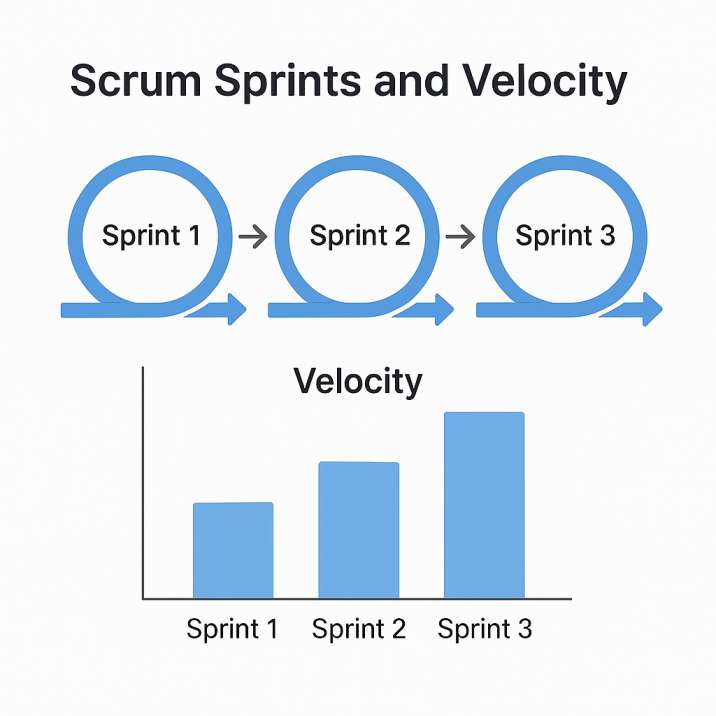
Velocity in Agile is a measure of the amount of work a Scrum Team can complete in a single Sprint, based on historical performance. It helps teams predict how much work they can accomplish in future Sprints and plan their iterations accordingly. Velocity is typically expressed in terms of story points, which are a unit of measure representing the relative size or complexity of user stories or tasks.
Here’s how velocity is calculated:
- Sum Up Completed Story Points: At the end of each Sprint, the Scrum Team calculates the total number of story points completed during that Sprint. Only the story points associated with user stories or tasks that meet the Definition of Done are included in the calculation.
- Repeat for Multiple Sprints: Velocity is calculated for multiple Sprints to establish a reliable average. Typically, teams use the velocity from the most recent several Sprints to calculate their average velocity. The number of Sprints used to calculate velocity may vary depending on the team’s stability and predictability.
- Calculate Average Velocity: Once the total completed story points for each Sprint are determined, the average velocity is calculated by summing up the story points completed in each Sprint and dividing by the number of Sprints included in the calculation.For example, if the completed story points for the last five Sprints are 20, 25, 30, 25, and 28, respectively, the average velocity would be:Average Velocity=20+25+30+25+285=1285=25.6Average Velocity=520+25+30+25+28=5128=25.6
- Use Velocity for Planning: Once the average velocity is calculated, the Scrum Team can use it as a guide for planning future Sprints. For instance, if the team’s average velocity is 25 story points per Sprint, they may plan to select approximately 25 story points’ worth of work from the Product Backlog for each Sprint.
